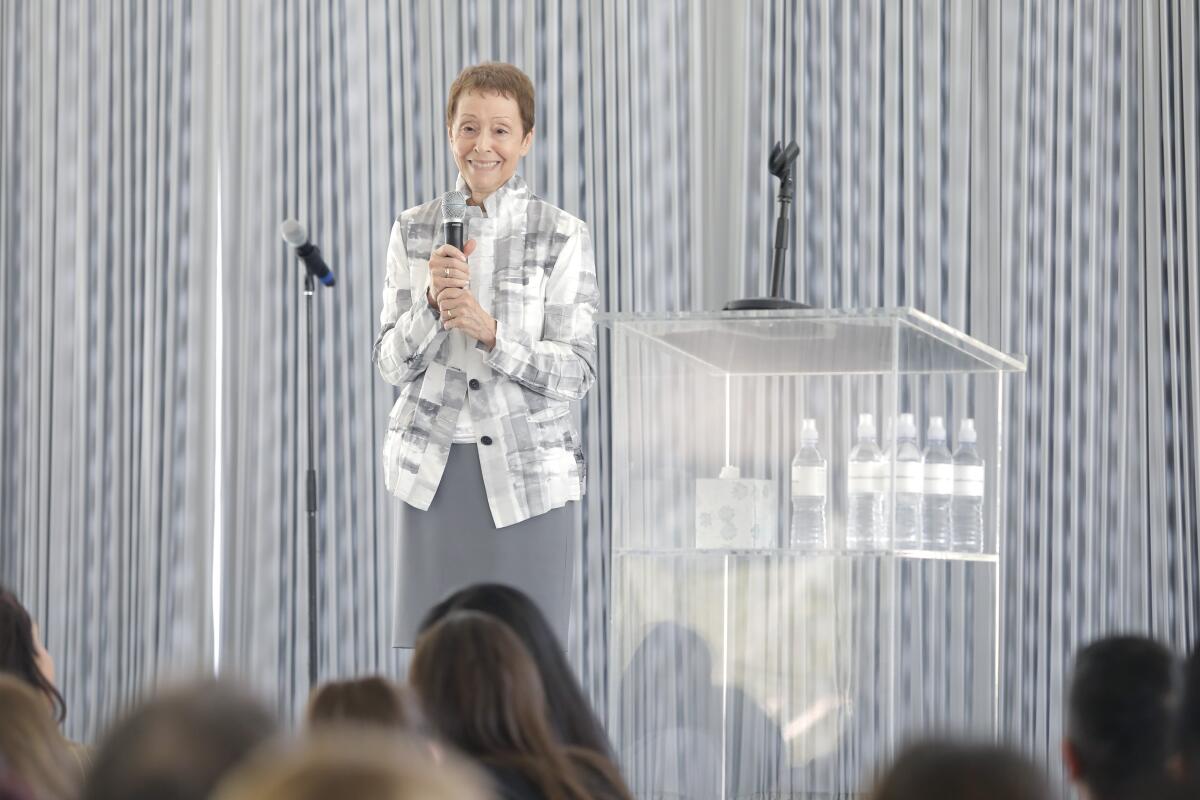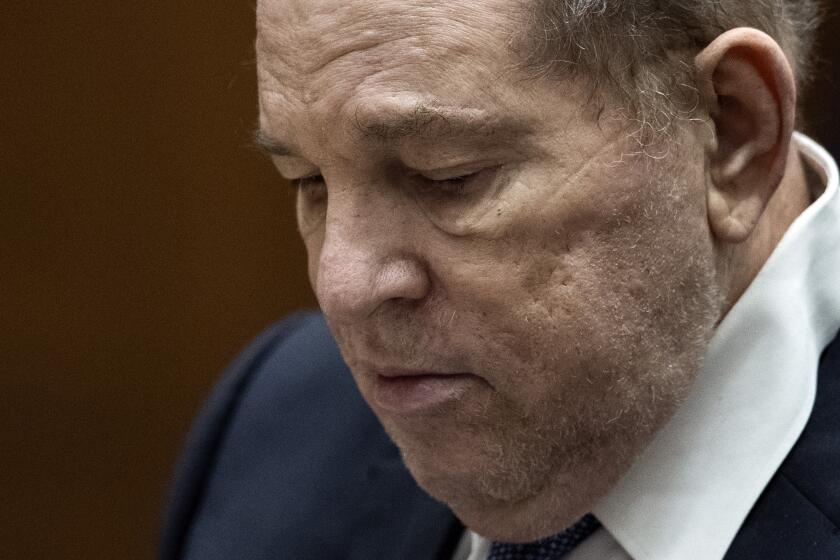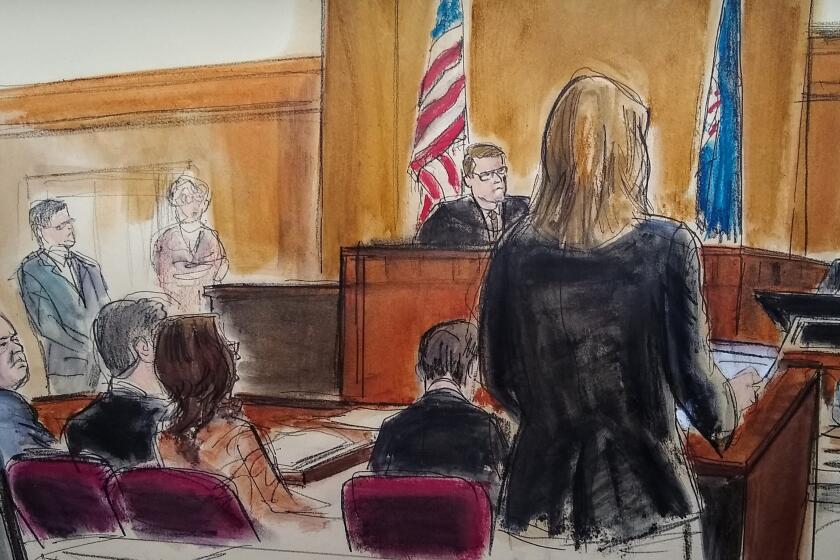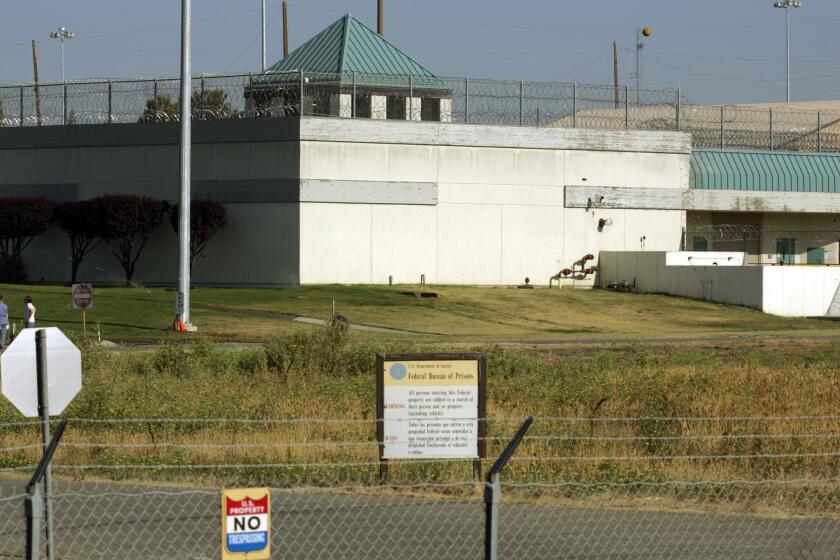Column: How Santa Monica’s Rape Treatment Center revolutionized the way we treat victims of sexual assault

- Share via
It’s impossible to know how many lives Gail Abarbanel has saved.
For decades, she has been singularly devoted to changing the way the world perceives and speaks about rape, and to helping victims of all ages heal from the trauma of sexual assault.
After 50 years as director of the Rape Treatment Center at UCLA Santa Monica Medical Center, she recently stepped down. She’s not retiring, she insisted to me recently when we met for lunch in Santa Monica, she’s just forging a new path.
I met Abarbanel 30 years ago, when she invited me to attend one of the center’s annual fundraising brunches at Ron Burkle’s lavish Greenacres estate in Beverly Hills. These were celebrity-studded events, often hosted by the casts of popular TV shows like “Friends” or “ER” or “Mad Men.”
But the afternoon’s stars were always the rape victims who would share their stories with the hushed crowd. (And yes, Abarbanel uses the word “victim” not “survivor.” “They are victims,” she says.)
In a stunning reversal, a New York appeals court overturned the conviction of movie mogul Harvey Weinstein, citing errors by the trial judge.
In 1994, the young woman who told her terrible story was the 24-year-old granddaughter of an entertainment executive. She grew up in Beverly Hills, not far from Greenacres. When she was 12, her father fired the family nanny and began raping her at night. He told her they had been lovers in a previous life. By the end of high school, after she had gathered the courage to leave home and reveal the abuse, she found solace at Stuart House, the Rape Treatment Center’s extraordinary refuge for children who have been sexually abused. Her father went to prison.
“There is nothing more powerful than hearing the victim tell their experience,” Abarbanel told me.
::
A Los Angeles native, Abarbanel began her career as a social worker in Santa Monica. She had no particular interest in rape victims, but in the early 1970s, she was asked to see a young woman who had been hospitalized after a suicide attempt. Less than a week earlier, it turned out, the young woman had been raped by a stranger on the beach.
“I was just so moved when I uncovered the rape,” Abarbanel told me. “And that was the beginning.” She soon realized how poorly rape victims were treated — by police, prosecutors, defense attorneys, judges and doctors and nurses — and how little was understood about their trauma, which was often invisible.
Harvey Weinstein accusers and others in Hollywood have condemned a New York appeals court’s decision to reverse the disgraced producer’s rape conviction.
Emergency rooms could be a nightmare. “There were no protocols for collecting evidence, no sensitivity,” Abarbanel said. “Nurses would come out into the waiting room and say, ‘Where’s the rape?’ ”
The legal system was stacked against victims. An alleged rapist would be charged only if a victim had demonstrated physical resistance “to the utmost,” as the law puts it. If a victim hadn’t fought back and gotten injured, she couldn’t credibly claim she was raped.
In court, victims were shamed and treated as if they were on trial; their sexual histories and the way they dressed could be used against them. If a case ever made it to a jury, judges were required to instruct that “rape is a charge that is easily made and hard to defend against so examine the testimony of this witness with caution.”
After Harvey Weinstein won an appeal to overturn his New York rape conviction, legal experts say he faces a tougher hill to climb as he attempts a similar strategy in his California case.
That has all changed in the 50 years since Abarbanel founded the Rape Treatment Center in 1974, and largely because of her work.
Her great innovation, much copied now, was the creation of a 24/7 one-stop shop for victims, with medical personnel, therapists and detectives and prosecutors coordinating under one roof. The idea was to empower victims, to make them feel safe and heard and supported.
In 1986, Abarbanel and attorney Aileen Adams, the first counsel for the Rape Treatment Center, created Stuart House. Before that, the treatment of child victims, even more so than adults, was egregious. Kids who disclosed abuse were ferried around to five or six different agencies, interviewed and re-interviewed by a succession of adult strangers. There was a lack of specialized forensic care, and very little specialized therapy. At Stuart House, children receive specialized pediatric forensic exams and extensive medical and therapeutic support. And they have to tell their stories only once.
::
In 1977, Abarbanel received a call from a man she’d never heard of. His name was Norman Lear, and he wanted to hire her as a consultant for a special episode of his hit TV series “All in the Family.”
“If you could talk to 40 million people about rape,” Lear asked Abarbanel, “what would you want to say?”
First and foremost, she told him, she wanted people to stop blaming victims.
Approximately 300,000 women are raped every year in the U.S. Those who choose to involve the criminal justice system are likely to face brutal questions.
That two-part episode, “Edith’s 50th Birthday,” was a seminal moment in the portrayal of rape on TV. Washington Post TV critic Tom Shales called it “shattering” and “brilliant.”
It also marked the start of an important alliance between the Rape Treatment Center and Hollywood. Abarbanel consulted on shows like “Lou Grant,” “Hill Street Blues, “Cagney & Lacey,” “L.A. Law” and “Grey’s Anatomy,” all of which helped nudge the culture away from victim blaming toward a more compassionate view of the trauma of rape.
Working with Hollywood was fun, said Abarbanel, who is petite, soft spoken and publicity shy, “but I always wanted to get back to work.”
Lear, who died last year, joined the center’s first board and frequently hosted its annual fundraising brunch.
When Abarbanel needed to raise money to get the Rape Treatment Center going, women who worked for Lear — many of whom had their own experience with rape — put her in touch with the prolific fundraiser Sandra Moss, who was married to A&M Records co-founder Jerry Moss.
Federal officials are set to close the so-called ‘rape club’ prison in Dublin, where guards and the warden were charged or convicted of sexual abuse.
At a luncheon organized by Moss at Mr. Chow’s in Beverly Hills, Abarbanel remembers being approached by Ruth Berle, Milton’s wife. “Honey,” Berle told her, “If you want to get money, you have to get the men.”
Moss made sure, when she hosted the first fundraiser for the center in her home, that the living room was full of important Hollywood men. “Norman had sent them all telegrams,” Abarbanel said. “Telegrams!”
At one of the fundraising brunches, the legendary producer Sherry Lansing was so inspired, she stood up and announced, “I’m going to do something!” And so she did; in 1988, she produced “The Accused,” a commercial and critical success. Its star, Jodie Foster, won her first best actress Oscar for portraying a woman gang-raped in a rowdy bar.
It’s impossible in this space to list all the Rape Treatment Center’s firsts. It has been responsible for changing laws, changing how we think, for educating hospitals, police departments, college presidents, school principals and athletic coaches about rape and rape prevention.
“I feel really good about what I’ve done,” Abarbanel told me. “I really do.”
She should. After all, she’s accomplished the rare feat of actually making the world a better place.
More to Read
A cure for the common opinion
Get thought-provoking perspectives with our weekly newsletter.
You may occasionally receive promotional content from the Los Angeles Times.

















